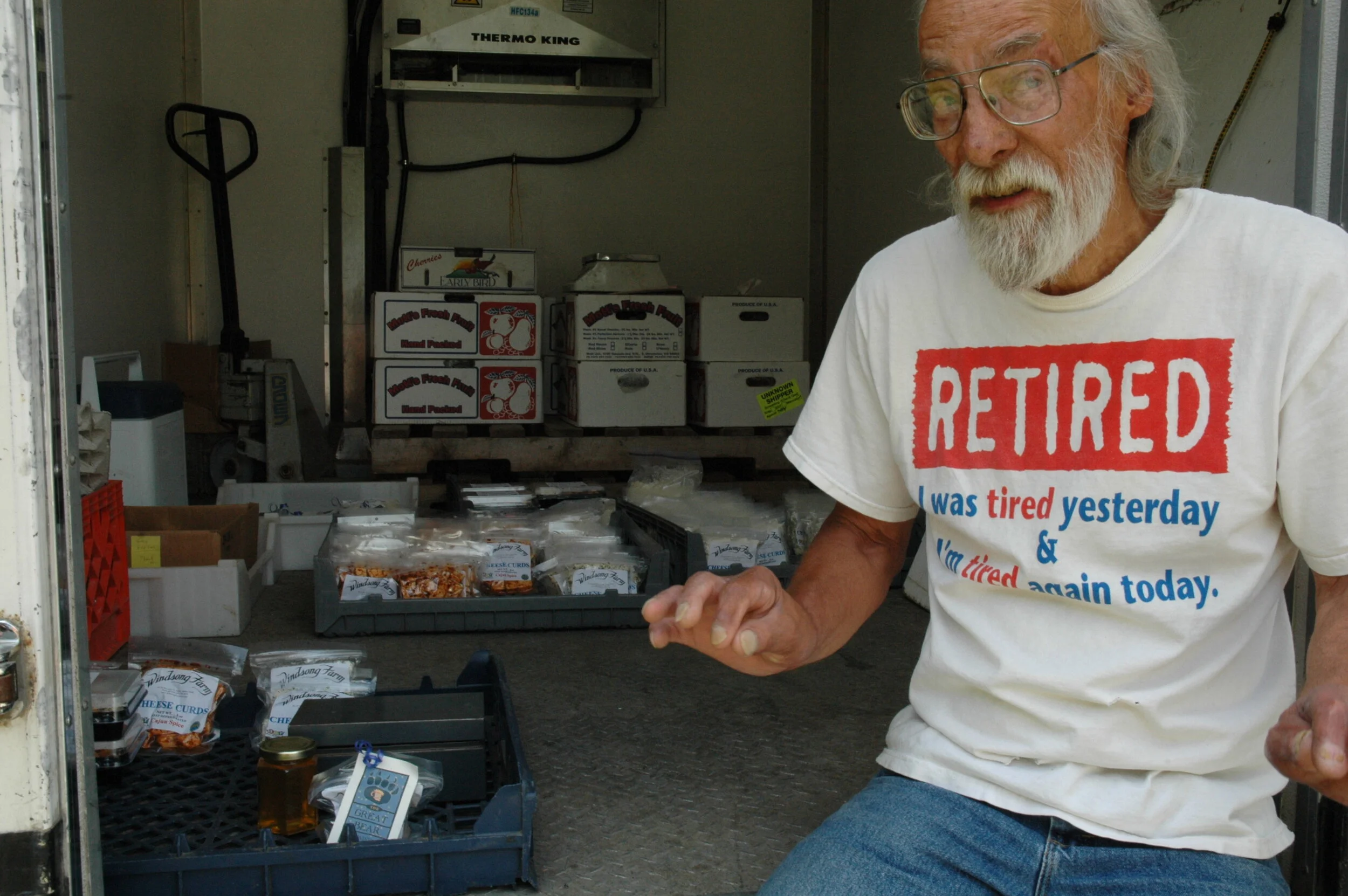Cranberry Ridge Farm: Alaska
August 2006
Name: Cranberry Ridge Farm [They moved! Find updates here.]
Owners: Matt and Rhonda Shaul
Location: Wasilla, AK (The Shaul family moved to Blossvale, NY a few years after we saw their farm in Alaska.)
Animals: Milking 26 goats of varying breeds
Cheeses/Products: Fresh mozzarella, chevre, various aged goat milk tommes
Matt grew up in Alaska and has always had a strong inclination to stay close to the land. He did spend some time in the lower 48, where he met his wife Rhonda but found that he missed the comfort of being surrounded by mountains that he found in Alaska. Rhonda had spent years working in cow dairies in the Midwest developing an in-depth knowledge of animal husbandry practices and also becoming an artificial insemination expert. The two of them have built Cranberry Ridge Farm from the ground up. Matt built their home with help from his father and also cleared a number of sections of thick trees to create areas for livestock to browse. On their 10 acres, they’ve got 24 milking goats and the total goat population is probably double that number. Their goal someday is to be milking 60 goats. The Shaul’s also have horses (which they will ideally be able to use almost exclusively to work the land), chickens, turkeys, 3-4 grass-fed beef cattle per year, and a handful of peacocks that were given to them as a gift.
They are currently working towards getting their Grade A certification through the state- when they are successful they will be the first Grade A goat dairy in Alaska. In the meantime, they have a sold-out goat share program where customers buy ownership shares in the goats and in return receive milk and cheese each week. Customers are coming from as far as Anchorage (a solid 45-minute drive) to get raw goat milk and cheese from them- clearly illustrating consumer interest in this kind of product. Matt and Rhonda are interested in diversity on their farm and are looking at the possibility of growing berries on some of their acreage to offer more at markets.
One of the primary challenges of raising livestock in Alaska is the cost and quality of feed (I know! We were thinking of freezing cold winters too!). The cost of hay is at least double what it is in other states and, because it is so difficult to get a high enough yield, farmers often grow the grasses out beyond their prime to increase production thus buyers are paying a high price for lower quality feed. Matt is interested in finding additional land where they could produce some of their own feed. Their goats browse in fenced-off areas and are also fed hay and a bit of grain with some mineral supplements.
We spent time walking around the Shaul’s 10 acres, discussing the particulars of goat breeding, etc. A number of other Wasilla residents who have goats turn to the Shauls for assistance with breeding which provides a small amount of additional income for the farm and means that while the animal is with them, being bred, they can use her milk for cheesemaking. The farm is way down a dirt road and backs onto wilderness so I had to ask the inevitable, "worry about predators often?" question. They explain that they have not had any problems because they have always had excellent watchdogs. Although they are not the purebred Pyrenees like we have seen on other farms, the two dogs they have been doing a fine job protecting the goats, horses, and occasional cow. Sounds fine to me until they mention that when they were out for a horseback ride the other day they saw grizzly tracks as big as a human head.
I also couldn’t resist asking about the cold. They explained that the animals do fine most of the year although Rhonda did make a few goat coats for the more delicate animals and they had to have some goat kids indoors with them during the coldest periods because they had purchased some pregnant does without knowing their exact due dates. Normally they breed their animals to deliver after the coldest period is over and staggered so that there is room for all the new kids in a warmer, enclosed space.
The Shauls are working constantly to be able to expand their cheesemaking. When we visited they were nearing the end of construction on a cheese maturing room to give Rhonda a space that is temperature and humidity controlled for making more aged cheeses. As for many cheesemakers, aged cheeses can help keep cash flow happening when the goats have dried off and you can’t make the fresh cheeses. Although there is still a considerable amount of work to be done, Cranberry Ridge is coming along nicely and most importantly the Shauls are having an impact on their community. As we were leaving they got a call from a local woman who had purchased a goat from them, the woman was trying to make cheese and had a couple questions for Rhonda. Patiently converting Alaskans to cheese one goat at a time...





